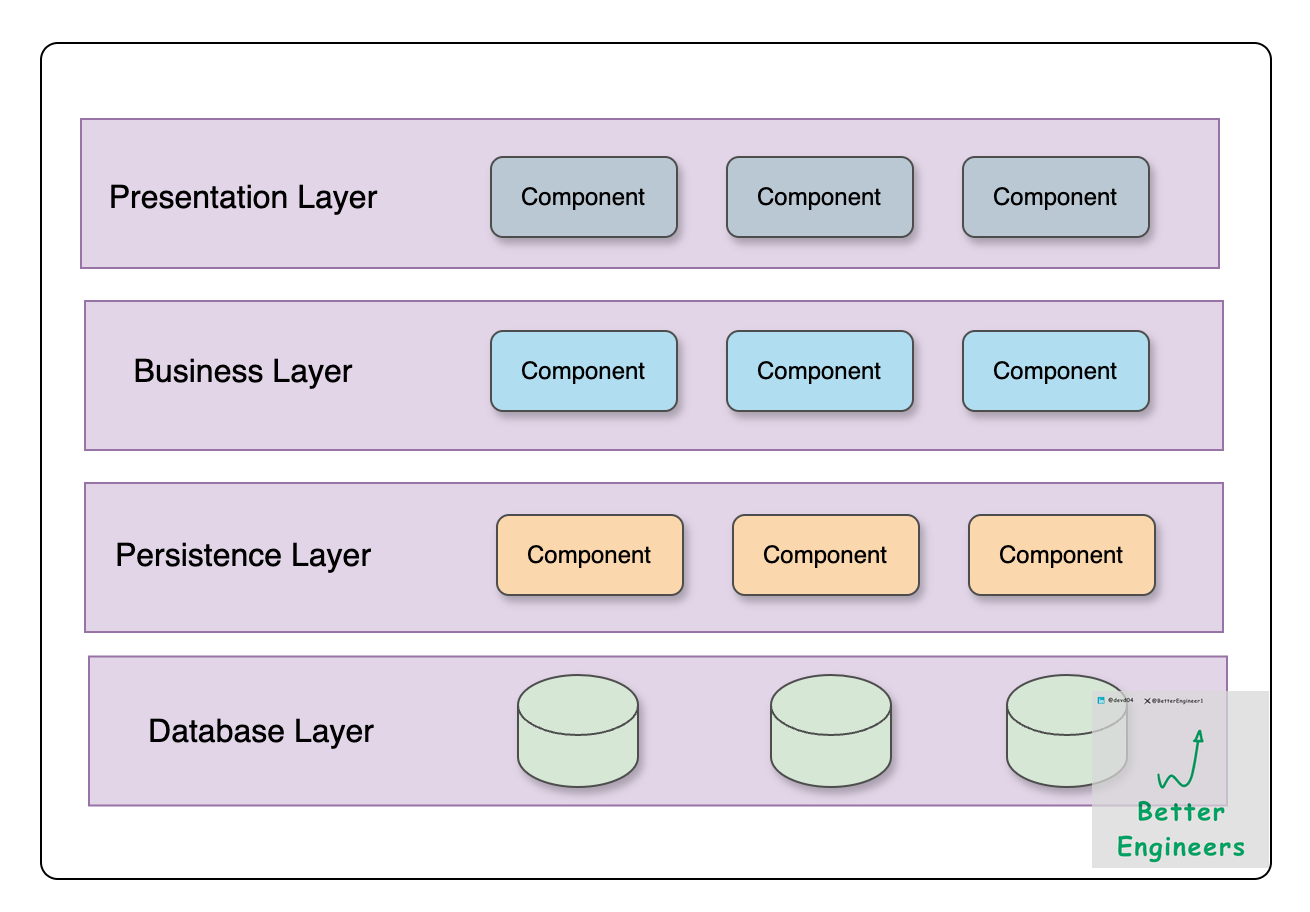Software Architecture Pattern - Layered Architecture
The most common architecture pattern is the Layered Architecture Pattern.
The most common architecture pattern is the Layered Architecture Pattern, otherwise known as the n-tier architecture pattern. This pattern is the de facto standard for most Java EE applications and therefore is widely known by most architects, designers, and developers. The layered architecture pattern closely matches the traditional IT communication and organizational structures found in most companies, making it a natural choice for most business application development efforts.
Layered Architecture Pattern
Components within the layered architecture pattern are organized into horizontal layers, each layer performing a specific role within the application (e.g., presentation logic or business logic). Although the layered architecture pattern does not specify the number and types of layers that must exist in the pattern, most layered architectures consist of four standard layers:
Presentation
Business
Persistence
Database
Each layer of the layered architecture pattern has a specific role and responsibility within the application.
For example, a presentation layer would be responsible for handling all user interface and browser communication logic, whereas a business layer would be responsible for executing specific business rules associated with the request. Each layer in the architecture forms an abstraction around the work that needs to be done to satisfy a particular business request.
For example, the presentation layer doesn’t need to know or worry about how to get customer data; it only needs to display that information on a screen in particular format.
Similarly, the business layer doesn’t need to be concerned about how to format customer data for display on a screen or even where the customer data is coming from, it only needs to get the data from the persistence layer, perform business logic against the data (e.g., calculate values or aggregate data), and pass that information up to the presentation layer.




